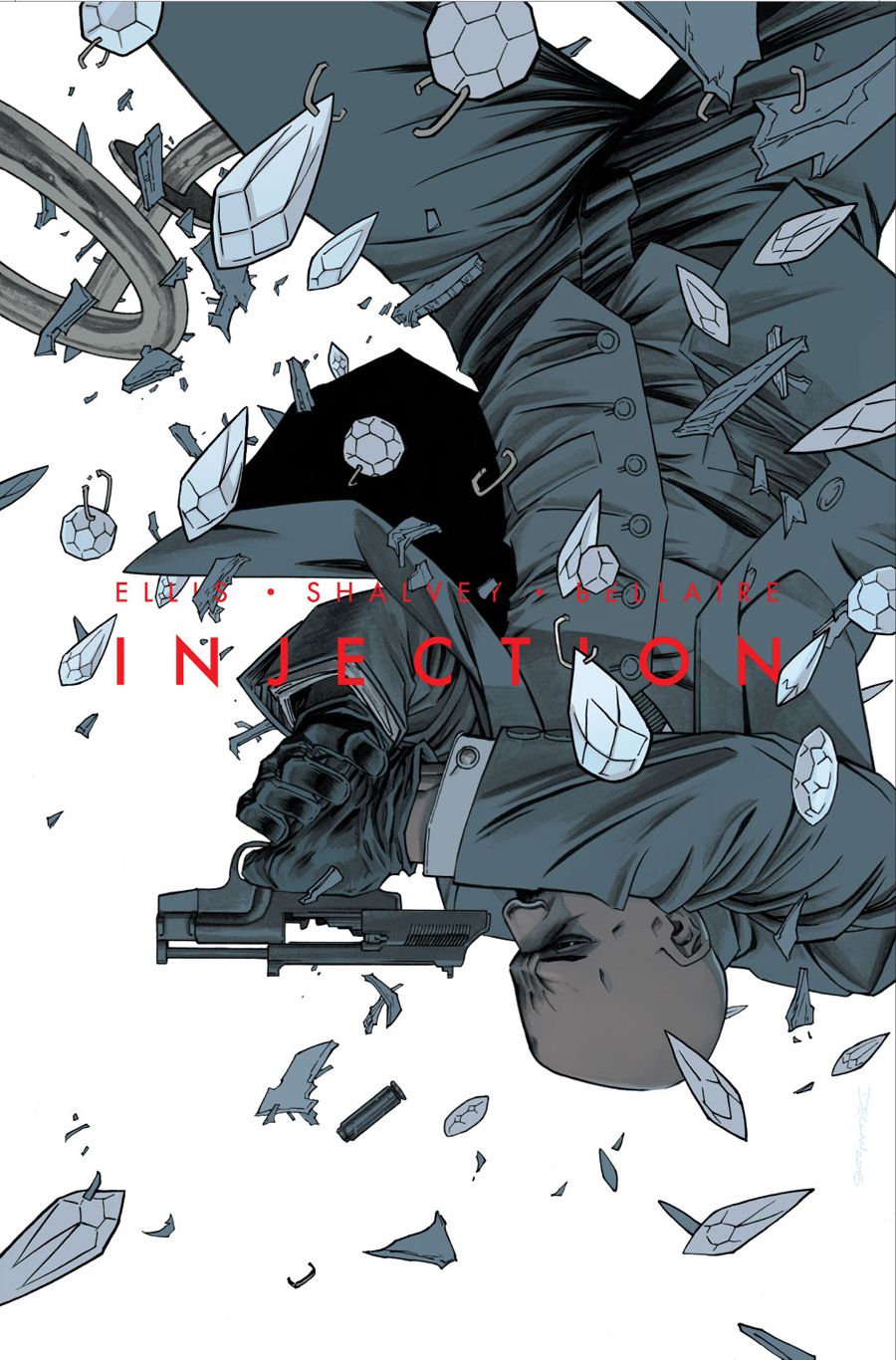Warren Ellis and Declan Shalvey's "Injection" is both a paranormal comic and a team comic, but it's much weirder than the sum of what those categories imply. In the second issue, Ellis' storytelling approach mixes the straightforward and the abstruse. Two issues in, he's still withholding a lot of basic information from the reader. We have the who and the where, but not the what, how and definitely not the why.
The debut issue efficiently introduced the team, who are members of the former Cultural Cross-Contamination Unit for FPI (Force Projection International) Cursus, but it left a lot of questions unanswered, among them why the team broke up and why Maria Kilbride lives in Sawlung Hospital.
In this respect, "Injection" might remind readers of Ellis' recent miniseries "Supreme: Blue Rose." Nondisclosure as a strategy creates some suspense, but it does so at a steep cost to the reader's patience. Thankfully, "Injection" is also much more grounded than "Supreme Blue Rose." Most of the story occurs within the real world and the familiar dispersed team trope provides a comforting pillar of structure.
"Injection" #2 picks up the story from the reality-shattering scene last issue, where Maria walked into a room that defies the laws of physics. While the room is not explained immediately, Maria's controlled, understated reaction is hilarious. Each page of "Injection" #2 has some of Ellis' sharp, salty dialogue. His mocking sense of humor doesn't spare his characters either. The sandwich transition is a ridiculous move, but it's executed smoothly and it's also a good joke, especially since Vivek refuses his sandwich while Maria has requested one repeatedly.
Maria Kilbride and Robin Morel got the most panel time in the debut issue, and Brigid Roth got the cliffhanger. In this issue, Vivek Headland and Simeon Winters get the bulk of the scenes and Brigid again gets the cliffhanger scene. Vivek's introduction shows off Ellis' manic humor and Shalvey's skill in enhancing that humor with facial expressions and shifting perspective. The entire time, Vivek never leaves his chair, showing the reader how he operates.
Simeon's introduction is a deliberate contrast to Vivek's, with maximum physical activity and minimal chattiness. For every fan of Ellis, Shalvey and Bellarie's great run on "Moon Knight," the Simeon sequence is a wish fulfilled. Simeon's turn covers almost half the issue. It is violent, accessible, to the point and spectacular. Shalvey excels in action scenes, especially hand-to-hand combat and break-and-enter sequences, in which the narrator moves through a building like a rat knocking down walls in a maze. The fight scene is full of energy and gets even more kick from Shalvey's visual surprises in the framing and progression. Flying chandelier crystals, the blur of a heavy skillet and an elegantly upset fruit bowl all add to the composition and depth of the scene. The fight ends with an act of over-the-top violence but, instead of dominating the page, it works like a brake because Shalvey's linework is more focused on rhythm than gore.
Bellaire's color work is top-notch, as usual. Her restrained hues in the fight scene add dimension and preserve the clear flow of action. The shift from the beige-dominated living room to the cool-toned kitchen is beautiful. Her hue choices are unusual and the effects dominate the mood. It's difficult to imagine a better choice for Shalvey's linework. In particular, the "Interrupt Two" panel and the close up of the sandwich are gorgeously lush in texture.
Do I know what's going on yet? No, but I know enough to want to see more. "Injection" is more ambitious than the self-contained mysteries of "Moon Knight." It's delivering on art and characters but needs a lot more plot definition by the end of the first arc. Warren, Shalvey and Bellaire still work together as a dream team, though, so chances are it will get there.

